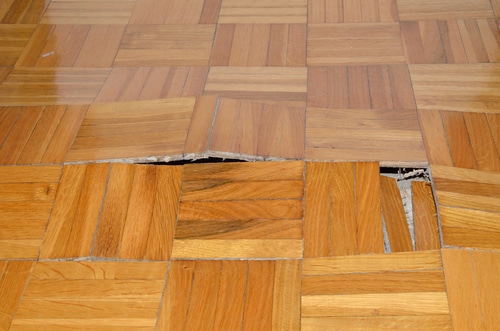How to Locate and also Repair Service Water Leaks-- A Comprehensive Overview
How to Locate and also Repair Service Water Leaks-- A Comprehensive Overview
Blog Article
The article author is making a few great points related to Detecting hidden plumbing leaks in general in this great article down the page.

Early discovery of dripping water lines can mitigate a potential calamity. Some little water leaks may not be noticeable.
1. Examine the Water Meter
Checking it is a surefire means that aids you uncover leakages. If it moves, that suggests a fast-moving leakage. This indicates you might have a slow leakage that might even be underground.
2. Inspect Water Intake
Evaluate your water costs and also track your water usage. As the one paying it, you ought to discover if there are any kind of discrepancies. If you spot sudden changes, in spite of your usage being the same, it implies that you have leakages in your plumbing system. Keep in mind, your water expense ought to fall under the exact same variety monthly. A sudden spike in your expense suggests a fast-moving leak.
A stable rise every month, even with the very same routines, reveals you have a slow leak that's likewise slowly rising. Call a plumber to extensively check your residential property, specifically if you really feel a cozy location on your flooring with piping beneath.
3. Do a Food Coloring Test
When it comes to water consumption, 30% comes from toilets. If the shade in some way infiltrates your dish during that time without flushing, there's a leak between the container and also bowl.
4. Asses Exterior Lines
Do not neglect to check your outdoor water lines as well. Test spigots by connecting a yard pipe. Should water leak out of the link, you have a loose rubber gasket. Replace this and make sure all links are limited. It will certainly help obtain it properly checked out and preserved yearly if you've got a lawn sprinkler system. One tiny leak can squander tons of water as well as spike your water costs.
5. Check and also Analyze the Scenario
Homeowners need to make it a behavior to inspect under the sink counters and also even inside closets for any bad odor or mold growth. These 2 red flags suggest a leakage so punctual attention is needed. Doing regular evaluations, also bi-annually, can save you from a major trouble.
If you understand your residence is currently old, keep a watchful eye on your heating systems, tubes, pipes etc. Look for discolorations as well as deteriorating as the majority of devices and pipelines have a life expectancy. They will certainly additionally naturally degrade due to tear and put on. Don't wait for it to intensify if you presume leaking water lines in your plumbing system. Call a professional plumber as soon as possible so you do not wind up with an awful mess in your house.
Early discovery of dripping water lines can reduce a potential disaster. Some small water leaks might not be noticeable. Examining it is a surefire means that aids you discover leakages. One tiny leakage can squander loads of water and also spike your water expense.
If you suspect dripping water lines in your plumbing system, don't wait for it to escalate.
How to Know If Your Home Has a Hidden Leak
Water Meter Reveals Inexplicable Water Usage
If you’d like to test whether or not there’s a leak somewhere in your home, you can do this using your water meter. Here is how to conduct the test:
Don’t use any water in your home for at least 30 minutes; this also means not turning on faucets or water-using appliances.
Go outside, and check your water meter for activity.
If your water meter shows that there was activity, even though no one was using any water, this proves that there is a leak in your home.Visible Mold or Mildew Growth
Leaks behind walls create moist, dark environments that allow mold and mildew to grow and thrive. Eventually, you might see mold growth forming on the wall closest to a hidden leak.
If mold is growing in an area that receives a high amount of moisture, such as a bathroom, it may simply be an indication that better ventilation is needed. However, if you see mold growth on a wall or the ceiling in an area where you would not expect, you probably have a hidden leak.
Musty, Mildew Odor
Sometimes you might not be able to see the mold or mildew that is growing as a result of a leak. However, the smell can give the problem away just as easily. If you catch a whiff of something musty, there’s a good chance that old water is collecting somewhere in your home that you can’t see.
Stained/Warped Walls, Ceilings, or Floors
When your home soaks up water, a variety of red flags can become visible, including ceiling stains, bubbling drywall, warped walls, and sagging floors. While these issues can be caused by excess humidity, they can also be signs that a pipe or plumbing connection has started leaking behind your walls.
Inexplicably High Water Bill
After a while, you get a general sense for what your water bill should be. If you own a pool or sprinkler system, your bill will tend to be higher during summer. However, if you receive a water bill that seems especially high, and you can’t figure out what caused it, then you may have a hidden leak somewhere that’s increasing your bill.
https://www.plumbingjoint.com/blog/2019/july/how-to-know-if-your-home-has-a-hidden-leak/

Hopefully you liked our topic about Leaking water lines. Many thanks for taking the time to read through our short article. Do you know another individual who is fascinated about the niche? Why not share it. We appreciate reading our article about Detecting hidden plumbing leaks.
Report this page